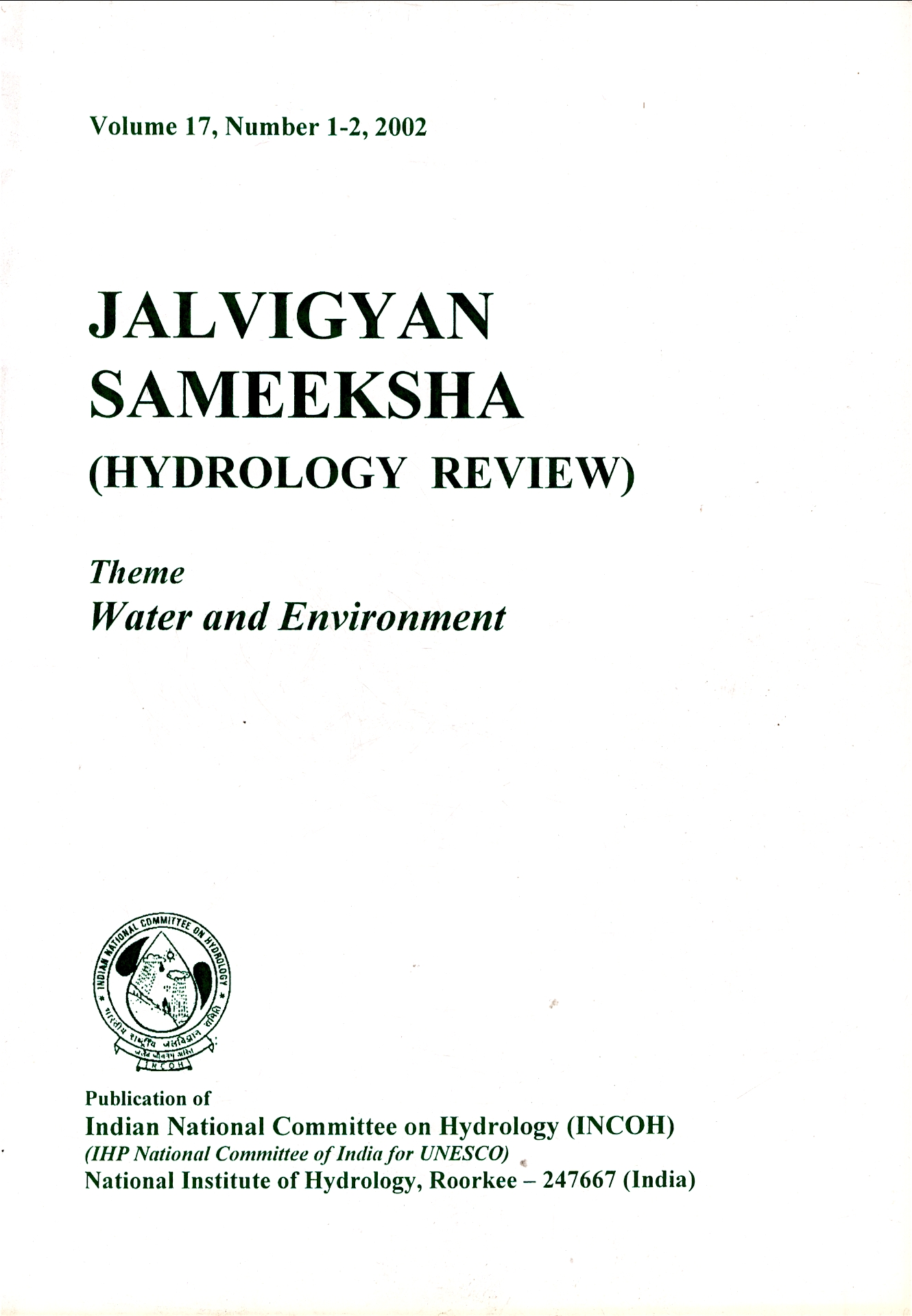- DSpace Home
- →
- Serial Publications
- →
- Jalvigyan Sameeksha
- →
- 22-Jal Vigyan Sameeksha Vol.-17(1-2)-2002
JavaScript is disabled for your browser. Some features of this site may not work without it.
22-Jal Vigyan Sameeksha Vol.-17(1-2)-2002
Browse by

Recent Submissions
-
Contents (National Institute of Hydrology, 2002)
-
(National Institute of Hydrology, 2002)Increasing human and livestock population along with significant developments in the various fields of agriculture has brought more and more lands under irrigation using mostly canal, dam, lift, ...
-
(National Institute of Hydrology, 2002)The drought-prone areas in India suffer from spatial and temporal variations in agricultural productivity. Traditional subsistence agriculture in vogue in these regions further enhances their ...
-
(National Institute of Hydrology, 2002)India has to support 15% of the world's population with only 2% of world's land and only 4% of the world's water supply. Preserving the quality and the availability of the freshwater resources ...
-
(National Institute of Hydrology, 2002)The causes and nature of various inorganic, organic and metallic constituents of ..tells in major cities in India were investigated in a detailed industrialisation and urbanisation study. The ...
-
(National Institute of Hydrology, 2002)The widespread arsenic (As) contamination in groundwater in parts of West Bengal (India) and Bangladesh is well documented In West Bengal alone, 75 blocks, located primarily in 5 districts on the ...
-
(National Institute of Hydrology, 2002)Development of water resources is imperative for a developing country like India to meet the demand for food and fibre for its millions of people. The overall need for water use has been ...
-
(National Institute of Hydrology, 2002)Out of all the available water resources, 97% of water is present in oceans, 2% is in polar ice caps and fresh water lakes constitute I% of the water, In India, out of total rainfall in ...